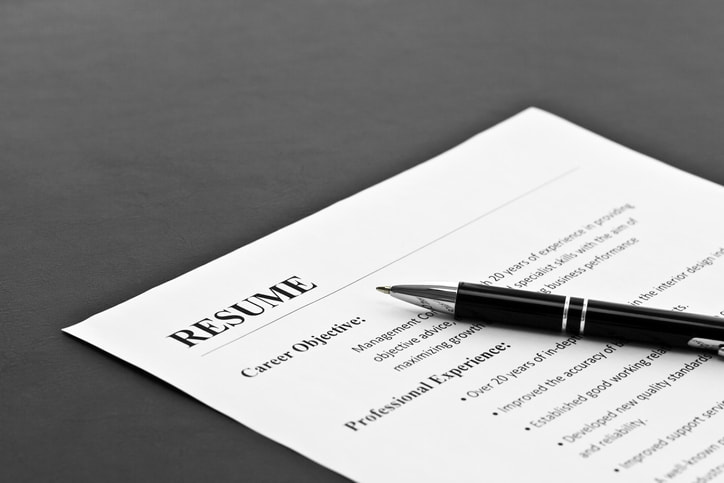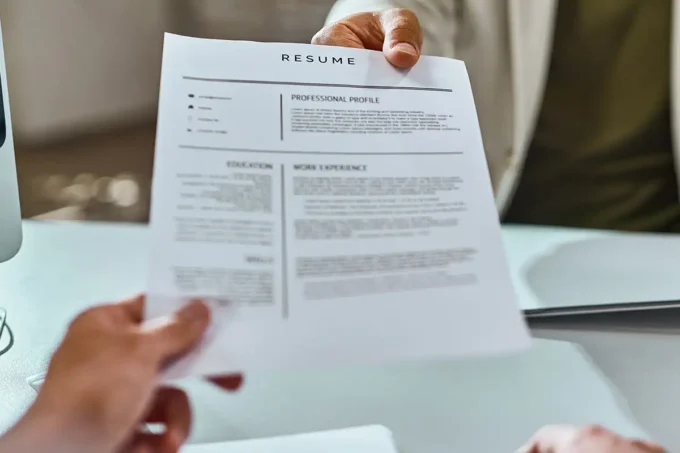According to the BLS, employment in information technology occupations will grow faster than average. Tech careers offer multiple advantages, such as a competitive salary, the possibility to work remotely, growth opportunities, and great workplace culture.
The best tech jobs are highly competitive, so you need a resume that highlights your accomplishments, hard skills, and the ability to learn quickly. In this article, we will share tips and strategies to create an interview-winning resume.
How long does it take to write a resume for tech?

On average, writing a tech resume will take you between one and eight hours. It depends on the length of your career history and whether you’ve changed careers.
Although you can create a resume in an evening or two, it also takes an understanding of the hiring process to get your foot in the door. If your work history has complexities or you are getting little interviews, consider hiring technical resume writers. These professionals will evaluate your work history, highlight the most important qualifications, and position you effectively for your target job.
Strategies to create a tech resume
Choose the resume format wisely
Before writing a resume, choose the resume format for your career situation. There are three formats you can use:
- In a chronological resume, you list your jobs in reverse chronological order starting with the most recent position. You include a job title, dates, and detailed responsibilities for each role. This format works best for job-seekers who have relevant technical experience.
- A functional resume focuses on education and competencies over job progression. In it, you place a detailed Skills section near the top and tell about your education and training in detail. This format works best for tech professionals changing careers.
- A combination resume format has the features of the two: it has a detailed work history and a Skills section with hard and soft skills outlined. For tech professionals, this format is best unless you have significant career gaps.
Create a dedicated Skills section
Since your tech knowledge is a decisive factor in getting you hired, be sure to outline your competencies in detail. Add programming languages, frameworks, and other tools you have hands-on experience with.
Divide all skills into groups to ease the reading. Example:
Programming languages: Javascript, Python, Kotlin, PHP
Frameworks: Angular, Django, Spring
Databases: MySQL, Oracle, Mongo DB
In addition to specific technologies you’ve worked with, add hard and soft skills. Here are the most in-demand skills for a Software Developer position:
- Web development
- Data analysis
- Agile/Scrum
- Project management
- Unit testing
- Problem-solving
- Databases
- Leadership
- Adaptability
- Critical thinking
- Verbal and written communication, and more.
Add a link to your GitHub or Stack Overflow account
To show your skills to the potential employer, add a link to your GitHub or any other account where they can see your code. Thus, they will evaluate your skills, and if your work speaks for itself, you’ll have a much higher chance of landing an interview.
Add the link at the top of the resume next to your contact information. Thus, the hiring manager will instantly see it.
Speak through examples and accomplishments
Listing your technical skills is a must, yet the employer also wants to know where and how you used these skills. When outlining your work experience, specify the projects you worked on, the industry, the size of the team, and other details that will help better evaluate your skills.
Use accomplishments and illustrate your impact with figures and percentages. Thus, you will show your ability to exceed expectations and drive the result for the company. Here are some examples of accomplishments for a resume:
- Led a team in revamping the app architecture, leading to a 45% reduction in page load times.
- Created a new data caching strategy, resulting in a 30% decrease in query response time and improved user experience.
Emphasize your professional experience
As an experienced tech professional, you are tempted to be very detailed about your experience. However, it is important to keep it concise – no more than 5-8 bullets. Recruiters are busy, and they have no time to read lengthy job descriptions to identify your strengths. Ease the task for them and include the most important responsibilities and achievements. Avoid obvious information and job duties that don’t relate to the target position.
If you’re a student or graduate, focus on personal projects. Mention your personal blog, open source contributions and other projects where employers can evaluate your knowledge. Thus, you will set yourself apart from other entry-level candidates and show off your skills.
List relevant certifications and training
A degree in Computer Science is not a must for many software development positions. However, the tech industry is rapidly evolving, so many employers appreciate ongoing training and professional development. Add relevant certifications, workshops, and courses to prove your professional competencies.
Here are examples of popular IT certifications that will enhance your resume:

- AWS Certified Cloud Practitioner
- Certified Information Security Manager (CISM)
- Certified Agile Leadership (CAL)
- Microsoft Certified Azure Solutions Architect
- Professional Scrum Master (PSM)
Tailor the resume for a specific job posting
Since nearly 99% of Fortune 500 companies and the majority of smaller ones use ATS software to weed out job applicants, using keywords is a must. To identify the right keywords, read the job description carefully and highlight the qualifications and requirements that appear frequently. Use the keywords and phrases in your resume naturally when describing your job duties and skills.
When writing your resume, focus on the experiences and skills the specific job posting requires. For example, if they are looking for a mobile developer who can optimize the app’s productivity, focus on this type of experience in your resume. No need to rewrite your resume every time – adjusting your Summary section and the most recent position is often enough.
Follow the best resume practices when creating a technology resume

- Don’t go back more than 15 years in your resume. Usually, employers are interested in your most recent experience. You can easily remove jobs you had over 15 years ago (or even 10 if you’ve changed jobs often) and irrelevant positions.
- Cut off the outdated skills. Read your resume carefully and remove outdated skills, technologies, and tools. For example, if your resume has such skills as the internet or Windows 2000 proficiency, delete them so that your resume looks modern.
- Double-check your contact details. A typo in the phone number or email can prevent the hiring manager from contacting you. Check the contact details and links for accuracy.
- Write in bullet points, not paragraphs. The resume written in paragraphs looks outdated. Moreover, large chunks of text are difficult to read. Use bullets instead of paragraphs – they are easy on the eye and the recruiter can skim through your document quickly.
- Proofread before sending. 59% of recruiters can reject your resume because of the typo. Check the grammar, spelling, and punctuation in your resume to make sure it makes the right impression on the recruiter.
With these strategies and tips, you will make a technology resume that effectively lists your hard skills and professional experience. If you still have questions about resume writing or your career history has issues, do not hesitate to consult a resume expert. With expert help, you will be sure that the resume shows you in the best light so you won’t miss on any professional opportunities. Good luck with your job search!












